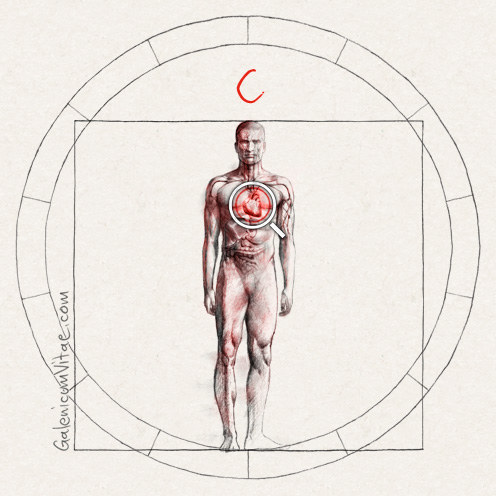Hypertrophy corresponds with a thicker heart muscle through the growth of the myocardial fibres. Generally, it is a consequence of hypertension, but can occur in certain types of congenital and hypertrophic cardiomyopathy or valvular overload diseases such as aortic stenosis.
Risk factors. Basically, arterial hypertension. If this continues over time (usually years), the heart muscle has to become bigger (hypertrophy) to have more pumping strength in each heartbeat.
Prevention. Follow a strict low-salt diet and perform exercise for hypertensive patients (walking, swimming, cycling, etc.).
It is inherited in the case of hypertrophic cardiomyopathy.
Treatment. Healthy lifestyle and exercise. A physician should advise on what kinds of exercises are appropriate.
Ventricular hypertrophy also called cardiac hypertrophy is a disease which is a thickening of the heart muscle (myocardium) that forms the ventricular wall, in the right and left. It is secondary to an alteration in which the ventricle must work harder to contract by having to overcome an obstacle, such as in pulmonary valvular stenosis (narrowing of the opening of the valve that regulates the flow of blood to the lungs).
Alone, or in combination with dilatation, it is a common cause of cardiomegaly or abnormal heart growth.
Hypertrophy can occur in both ventricles, but the most common is left ventricular hypertrophy.
Left ventricular hypertrophy is caused by hypertension, stenosis or aortic deficiency (valvular, supravalvular or subvalvular), hypertrophic cardiomyopathy, dilated cardiomyopathy, aortic coarctation, congenital heart defects such as persistent ductus arteriosus and ventricular septal defect.
Right ventricular hypertrophy is part of diseases such as chronic cor pulmonale, right ventricular overload due to pulmonary arterial hypertension secondary to heart disease affecting the left side of the heart (especially stenosis and insufficiency), pulmonary thromboembolism, congenital heart disease such as isolated valvular pulmonary stenosis, Tetralogy of Fallot and atrial septal defect.
The left ventricular hypertrophy, if severe, may eventually impair heart function due to difficulties in filling and can decrease the force of contraction of the heart. Hypertrophy can occur in both ventricles, but the most common is left ventricular hypertrophy. The best prevention of ventricular hypertrophy is adequately preventing and controlling high blood pressure with a salt-free diet, exercise and taking appropriate antihypertensive medication.
Sometimes, when the heart's walls are thick with no apparent cause, diagnosis may be hypertrophic cardiomyopathy. HCM is a disease of the heart muscle characterised by increased wall thickness (hypertrophy), which is not due to causes beyond the muscle (e.g., hypertension, valve disease, etc.). It is inherited in a high percentage of cases.
For more information visit:
Left ventricular hypertrophy
http://www.mayoclinic.org/diseases-conditions/left-ventricular-hypertrophy/basics/definition/con-20026690
What is Left Ventricular Hypertrophy (LVH)?
http://my.clevelandclinic.org/services/heart/disorders/left-ventricular-hypertrophy-lvh

 Digestive
Digestive  Blood
Blood Cardiovascular
Cardiovascular Dermatology
Dermatology Genitourinary,
Genitourinary, Hormones
Hormones Infections
Infections Oncology and
Oncology and Musculo-skeletal
Musculo-skeletal Mental health and
Mental health and Parasites
Parasites Respiratory
Respiratory Senses
Senses Various
Various




